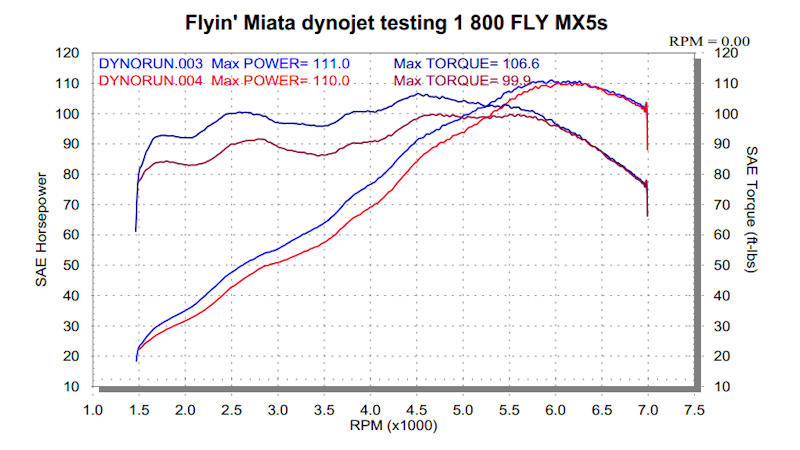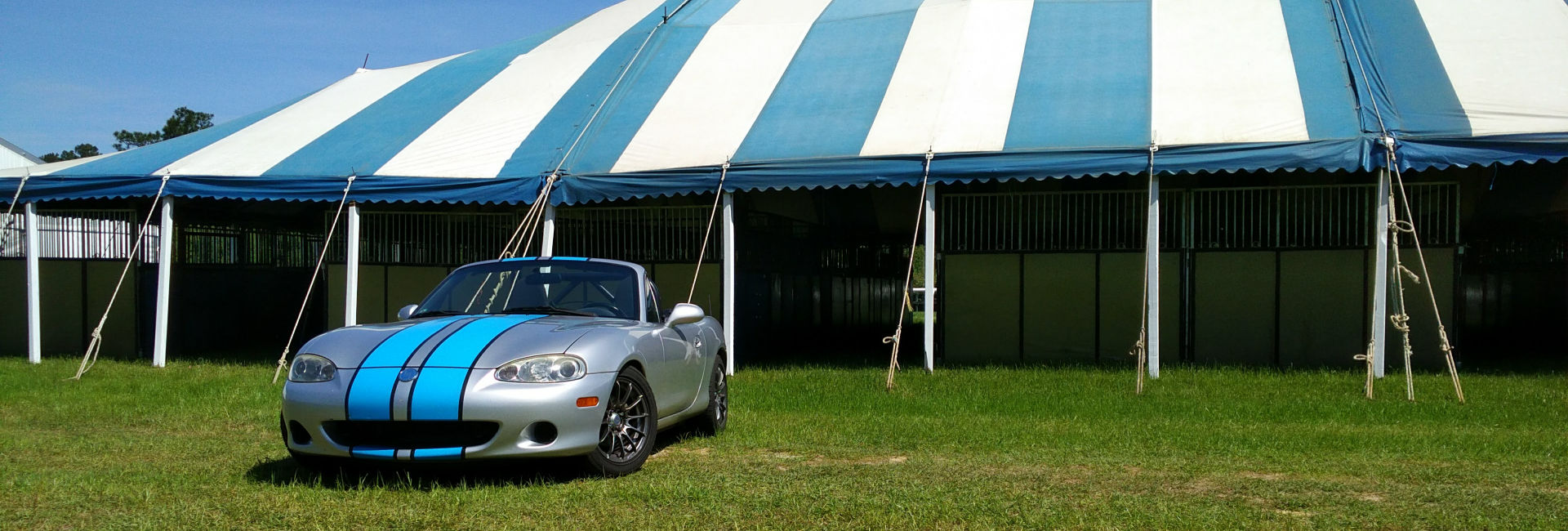
I was led to the VVT system by the CEL fault code that the car keeps throwing, P0012, which translates to “A” Camshaft Position – Timing Over-Retarded because the VVT controls the intake (A) cam. The image above is from the fine folks at Flying Miata who actually dyno tested the effects of the VVT system; the blue lines show the system operating and the red lines show it disconnected. Looking at the lines there are no noticeable bumps at any RPM value, they are relatively parallel with the only difference being that the numbers are higher with. than without.
Well, it turns out my idea of the VVT kick, that feeling of a surge of power at certain RPM, is not really from the Variable Valve Timing system after all. With further research I now find out it is from something called the Variable Tumble Control System (VTCS) that was created to help emissions at low RPMs. A valve closes part of the intake path, increasing the velocity of the intake charge. The butterflies are closed if two conditions are met: the coolant temperature is less than 65C and the engine RPM is less than 3000.
I’ve always sort of felt that this problem only occurs when the car is fully warmed up, so I wonder if maybe those butterflies stay closed once the car is warm and that is what is causing the slight out of tune feeling at higher RPMs. The only problem with this theory is that the VTCS has its own fault code, P2006, and I’m not getting one of those.
I guess as an elimination test for the VVT system I could go ahead and pull the electrical connector off the oil control valve, thereby disabling it and drive the car until it gets warm and see if my symptoms are still there. Maybe tomorrow.
